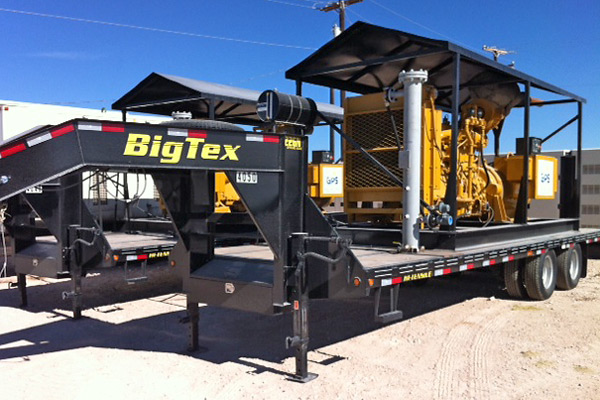
Generators supporting Oil & Gas operations need to be robust, efficient, high quality generator packages that can handle continuous use in harsh conditions. We’ve put together a list of six key components that should be included, or at least considered, for industrial generators used in the oilfield.
1. Coalescer
A coalescer is a tool that separates emulsions into their compounds by physical alteration of droplets of the emulsion. In the Oil & Gas industry they are mainly used to remove water and hydrocarbon liquids to <0.011 ppmw (plus particulate matter to <0.3 um in size) from natural field (or wellhead) gas to ensure higher natural gas quality and protect downstream equipment. Analysis of the field gas will indicate what size and type of coalescer is required to clean-up the gas to the required level.
2. Oil Makeup Tank
A generator engine needs a constant supply of oil to run properly. An oil makeup tank is an intermediate oil reservoir designed to supply fresh oil to a crankcase oil level maintainer. This type of simple oil management system can provide reliable engine protection as well as increased service intervals between oil and filter changes.
3. Spill Containment
In addition to keeping a cleaner/safer environment, avoiding spills saves time and money when using a generator in any application. It can be especially important for Oil & Gas applications where the generator is often deployed in a remote location and may be left un-attended for long periods of time. Spill containment can be a simple as building a berm around the generator/jobsite to usage of portable trays, pallets, drums or bladders to help capture hazardous spills and prevent them from spreading.
4. Heavy Duty Trailer
Often overlooked is the strength of the trailer a generator sits on. Special consideration should be taken to assess where the generator will be used and what kind of roads will be taken to get the generator to the site. Oil & Gas operations often take place in remote areas and can involve transporting a generator on rough dirt roads. A heavy duty trailer with extra ground clearance can help safely transport a generator to these remote locations, especially during or after poor weather conditions.
5. Remote Monitoring System
Many generators are located in remote locations with very few to no regular inspections. Without regular monitoring, there is no notification of pending problems or when the power is shut down until someone goes to the site for an inspection. By then, the damage may have already been done. A cellular or satellite based monitoring system allows companies to keep an eye on its remote generator without the need to have a person physically on site. These remote systems continuously monitor a generator’s performance parameters to stay on top of potential problems and send notification of failures that require immediate service for continued operation.
6. Emissions Reduction Kit
Sometimes, natural gas generators are required to include Emissions Reduction Kits to meet local/EPA emission standards. It is always best to check with the local Air Quality Management Board having jurisdiction over your jobsite for any specific emission requirements which may applicable to your site or annual runtime.
In the Oil & Gas industry, time really is money. Don’t let a generator failure cause down-time for your crew. Start with a robust, high-quality generator package that is designed and optimized for oilfield use. Global Power Supply specializes in generator rentals and sales for the Oil & Gas industry, we also back our generators with superior service, so if an issue does come up, we’ll get it resolved as quickly as possible.
Contact Global Power Supply anytime, we’d be happy to help with your power needs.